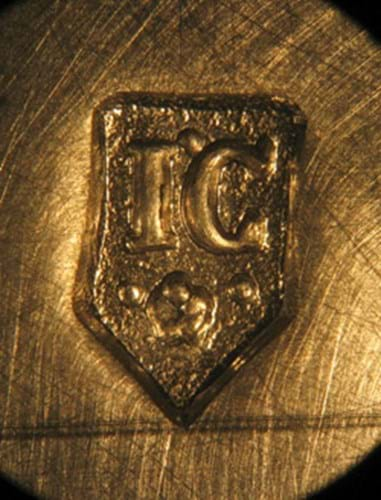
Information on the case relating to Peter Ashley-Russell contains a directory of colour images and descriptions of the items faked by Ashley-Russell. Close-up images of the marks, created by the fake punches found at his premises, will allow dealers, collectors and auctioneers to check potentially spurious items.
The fake maker's marks displayed in the document on the website include date letters, leopard heads and the lion passant.
The second Ashley-Russell case - he received a custodial sentence for similar activities in 1986 - has been described as the most significant involving hallmarking deception since the infamous Lyon and Twinam case of the late Victorian era. All who have handled the material describe it as very convincing and the work of a professional forger.
At Snaresbrook Crown Court in London in September 2008, Ashley-Russell was sentenced to three years' imprisonment for offences under the Forgery Act 2006, including four offences relating to the faking and forging of antique silver.
When, in 2007, the Metropolitan Police's Specialist Crime Operations team raided a property in Beckton, East London, they seized 55 fake punches that consisted of town marks, date letters and makers' marks all purporting to be from the late 17th to the early 18th centuries. Ashley-Russell admitted making them.
The size of Ashley-Russell's fraud is still not known. The prosecution was formed around 39 pieces, but he is also known to have had an eBay account, regularly listing silver flatware. It is thought that more than 450 items were offered on eBay but they did not form part of the case because the police wished to avoid a costly and time-consuming High Court appearance to obtain a production order that would have allowed them to look at eBay and PayPal accounts.
Dr Robert Organ, deputy warden of Assay Office London said: "[We] wish to do all [we] can to help the antiques trade deal with the aftermath of the damage created by Mr Ashley Russell's deception. It is hoped that the guide, will prove an invaluable tool in achieving this goal."
Spurious or suspicious items can be sent to the Antique Plate Committee, the industry-recognised body established in 1939 which examines suspect silver items and advises Assay Office London on the authenticity of hallmarks and illegal alterations or additions.
The APC meets on a quarterly basis and charge no fee for examination.
The Ashley-Russell fakes are believed to be one of several ongoing investigations into antique silver forgeries. Of particular concern to the silver trade are pieces of suspect 'Georgian' hollowware, including what purported to be a George I Britannia Standard bowl and ewer that sold for £90,000 to S.J. Phillips at Duke's of Dorchester in 2002. It was later returned after it tested only as sterling.
By Roland Arkell




